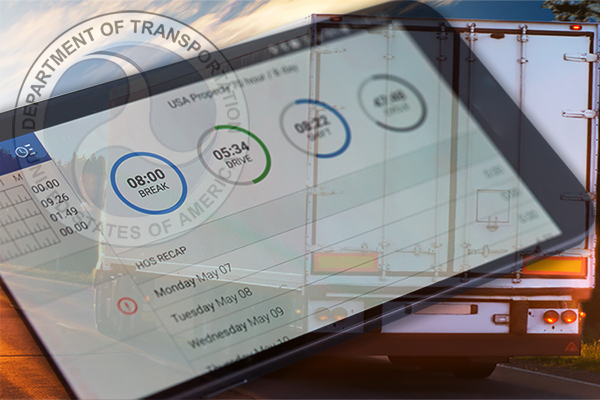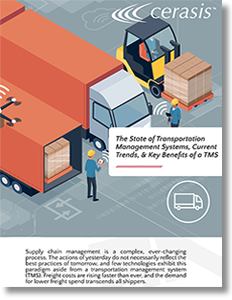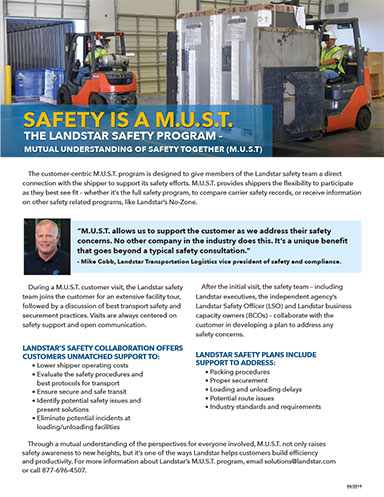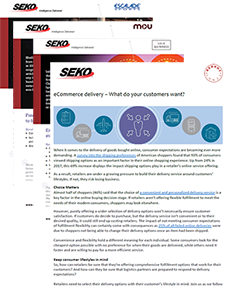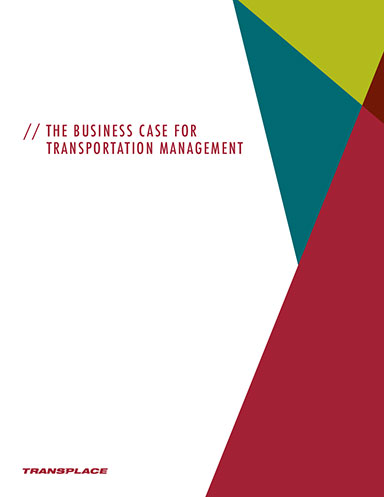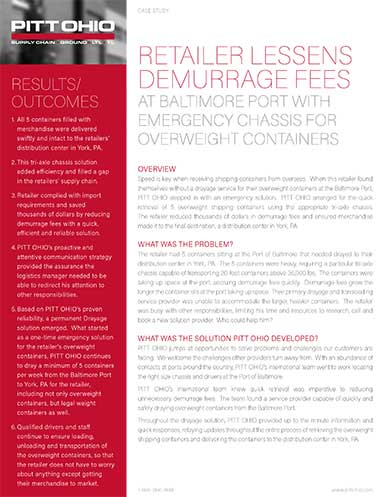U.S. Transportation Department Moves to Ease Hours-of-Service Rules for Truckers

The U.S. Transportation Department is poised to relax the federal regulations that govern how many hours a day truckers can be behind the wheel, interest groups have lobbied to make the rigid “hours of service” rules more flexible.
Truck Driver Hours-of-Service
Motor carriers that have long been pleading for more flexibility in the federal government’s truck driver hours-of-service (HOS) rules may finally be getting their wish…maybe.
That was the key takeaway from a recent Associated Press report published last week that stated the United States Department of Transportation is taking steps to “relax” the current HOS rules, which many see as another example of the Trump administration’s de-regulation efforts, which are viewed favorably by business interests, if not safety interests.
“I think flexibility is a code word for deregulation,” said Cathy Chase, president of Advocates for Highway and Auto Safety, an alliance of insurance companies and consumer, public health and safety groups. She said the hours of service requirements, which permit truckers to drive up to 11 hours each day, are already “exceedingly liberal in our estimation.”
“First of all, this administration is not as aggressive as the prior,” said Bill Sullivan, the top lobbyist for the powerful American Trucking Associations, whose members include the nation’s largest motor carriers and truck manufacturing companies. “Most importantly, the partnership with them has not been as suspicious of the industry as in the past.”
Trucking interests had pressed the administration and Congress for the rule changes and last year secured support from 30 senators, mostly Republicans. The lawmakers wrote in a May 2018 letter to Federal Motor Carrier Safety Administration chief Ray Martinez that the rules “do not provide the appropriate level of flexibility” and asked him to explore improvements.
This part is perhaps the key working thesis of the AP report, one that clearly is viewed as music to the ears of motor carriers and trucking circles around the United States;
“Though no specific proposal has been released, the rules believed to be up for repeal involve daily limits on the number of hours a truck driver can be behind the wheel and a requirement for a 30-minute break during an eight-hour stretch of driving.”
As things currently stand now, the current HOS rules, which took effect in July 2013, are as follows:
- the maximum number of hours a truck driver can work within a week was reduced by 12 hours from 82 to 70;
- truck drivers cannot drive after working eight hours without first taking a break of at least 30 minutes, and drivers can take the 30-minute break whenever they need rest during the eight-hour window;
- the final rule retains the current 11-hour daily driving limit (the FMCSA was considering lowering it to 10 hours) and will continue to conduct data analysis and research to further examine any risks associated with the 11 hours of driving time;
- truckers who maximize their weekly work hours to take at least two nights’ rest when their 24-hour body clock demands sleep the most - from 1:00 a.m. to 5:00 a.m. This rest requirement is part of the rule’s “34-hour restart” provision that allows drivers to restart the clock on their work week by taking at least 34 consecutive hours off-duty. The final rule allows drivers to use the restart provision only once during a seven-day period, and
- carriers that allow drivers to exceed the 11-hour driving limit by 3 or more hours could be fined $11,000 per offense, and drivers could face civil penalties of up to $2,750 for each offense
While motor carriers yearn for more flexibility in current HOS rules, in order to be more efficient, the report made it clear that safety concerns remain paramount, citing a May report issued by the Federal Motor Carrier Safety Administration (FMCSA), which said there were 4,657 large trucks involved in fatal crashes in 2017, a 10% increase over 2016.
Those numbers don’t lie, that is obvious. But, at the same time, many carriers view them as so onerous that by following them to the letter of the law can make things unsafe, too. That said, it makes for a difficult situation on all sides.
It is unknown what the clear next steps are until more visibility is provided. But one thing for sure is that this situation is far from over. When the Electronic Logging Device (ELD) mandate took effect in late 2017, it did remove some capacity from the market, but not as much as was originally expected. And with the “boom” year that 2018 was in trucking, capacity was as tight as it has been, maybe ever.
In mid-2019, market conditions have changed as capacity has loosened and demand is not at the heightened levels of a year ago. But things can change quickly, especially in this market, and regulations often play a part in the reasons why. Will they again? We will have to see.
Related Article: How Blockchain Data Will Help Truckers Stay HOS Compliant and Remain Competitive
Top Transportation White Papers
The State of Transportation Management Systems, Current Trends, & Key Benefits of a TMS
In this white paper, you will learn about; what a transportation management system is and what it can do for shippers, the current state of transportation management system in use, and the future state of the TMS market. Download Now!
The Landstar Safety Program
Through a mutual understanding of the perspectives for everyone involved, M.U.S.T. not only raises safety awareness to new heights, but it’s one of the ways Landstar helps customers build efficiency and productivity. Download Now!
Omni-Channel Logistics Leaders: 5 Key Insights to Improve Inventory Performance
This joint research study, conducted by LEGACY Supply Chain Services and Adrian Gonzalez of Adelante SCM, examines and provides insight into leading inventory management challenges, opportunities, and best practices. Download Now!
Demystifying an Omni-channel World
Managing omni-channel order fulfillment, while establishing a more efficient distribution and transportation network strategy. Download Now!
Ecommerce Delivery – What Do Your Customers Want?
This paper includes 3 real delivery scenarios and the supply chain and logistics needs, case studies, of London's Portobello Road MOU company, the iconic Lulu brand, and Escalade Sports. Download Now!
The Business Case for Transportation Management
This whitepaper examines how a transportation management system (TMS) can help companies – from small-to-midsized businesses to large enterprises – reduce risk, improve operational efficiency and drive meaningful change within their organization. Download Now!
More Resources on Transportation Management
Article Topics
PITT OHIO News & Resources
1-2 Day Reliable Delivery Service Adds Value to Customer’s Overall Offering 6 Reasons Shippers Diversify Their Portfolio of Drayage Providers PITT OHIO heralds new next-day lanes into New England PITT OHIO Wins 2023 Penske Logistics Freight Management Carrier Award Scope 3 Emissions from Freight Transportation Warehouse Solutions for a Variety of Industries PITT OHIO Receives 2nd Supply Chain Sustainability Award More PITT OHIOLatest in Transportation
Nissan Channels Tesla With Its Latest Manufacturing Process Why are Diesel Prices Climbing Back Over $4 a Gallon? Luxury Car Brands in Limbo After Chinese Company Violates Labor Laws The Three Biggest Challenges Facing Shippers and Carriers in 2024 Supply Chain Stability Index: “Tremendous Improvement” in 2023 Trucking Association CEO on New Biden Policy: ‘Entirely Unachievable’ Two Weeks After Baltimore, Another Cargo Ship Loses Power By Bridge More TransportationAbout the Author
